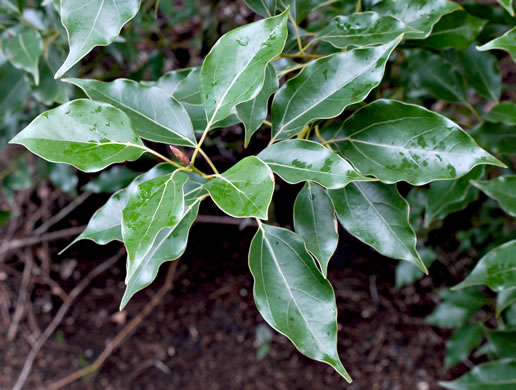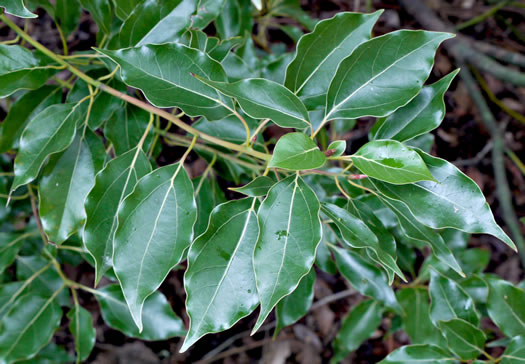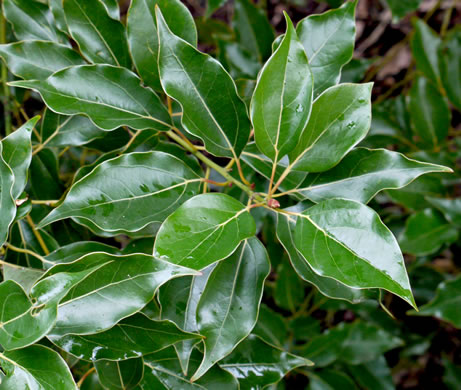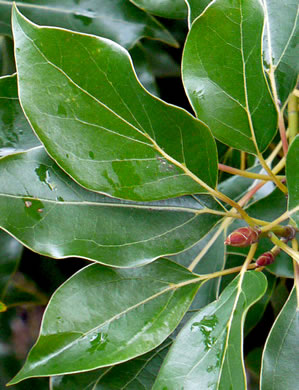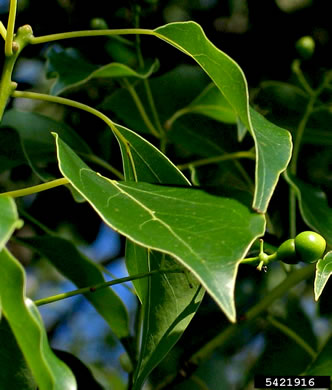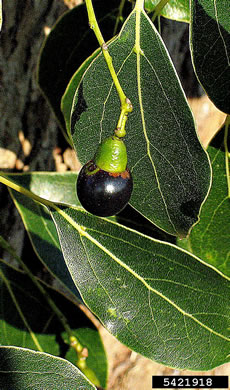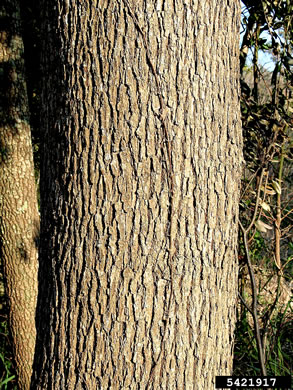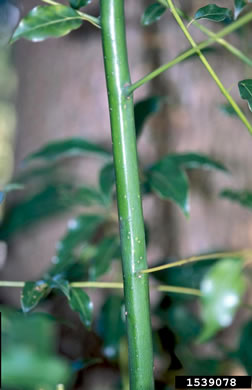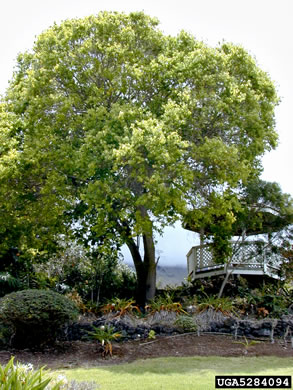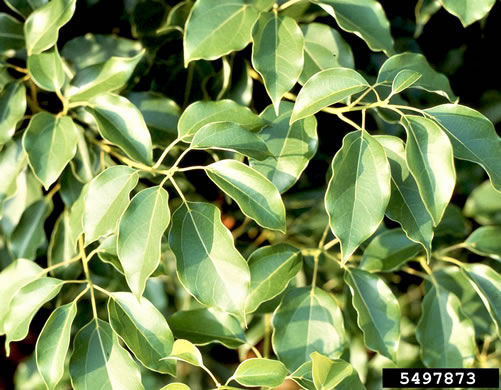Spermatophytes (seed plants): Angiosperms (flowering plants): Magnoliids: Laurales
WEAKLEY'S FLORA OF THE SOUTHEASTERN US (4/14/23):
Camphora officinarum
FAMILY
Lauraceae
Go to FSUS key
Dig deeper at SERNEC, a consortium of southeastern herbaria.
Check out EDDMapS.org to see where this has been reported.
Read more about Camphortree at Vascular Plants of North Carolina.
SYNONYMOUS WITH
PLANTS NATIONAL DATABASE:
Cinnamomum camphora
FAMILY
Lauraceae
SYNONYMOUS WITH Floristic Synthesis of North America. BONAP (Kartesz, 2021)
Cinnamomum camphora
SYNONYMOUS WITH Floristic Synthesis of North America (Kartesz, 1999)
Cinnamomum camphora
SYNONYMOUS WITH Flora of North America north of Mexico, vol. 3 (1997)
Cinnamomum camphora
SYNONYMOUS WITH (INVALID NAME) Manual of the Southeastern Flora (Small, 1933, 1938)
Camphora camphora
COMMON NAME:
Camphortree
To see larger pictures, click or hover over the thumbnails.
JK Marlow jkm150301_802
March Charleston County SC
Leaves glabrous, long-petioled, spicy-aromatic when crushed, per Woody Plants of the Southeastern US: A Winter Guide (Lance, 2004).
JK Marlow jkm150301_805b
March Charleston County SC
Leaf margins entire, yellowish-green, and wavy, per A Field Guide for the Identification of Invasive Plants in Southern Forests (Miller, Chambliss, & Lowenstein, 2010).
JK Marlow jkm150301_805c
March Charleston County SC
Buds 1.2cm long, sharp-pointed, with overlapping scales, per A Field Guide for the Identification of Invasive Plants in Southern Forests (Miller, Chambliss, & Lowenstein, 2010).
James H. Miller, USDA Forest Service, Bugwood.org bug_5421918
October
Many fleshy dangling drupes, turning black with a funnel-shaped green base, per A Field Guide for the Identification of Invasive Plants in Southern Forests (Miller, Chambliss, & Lowenstein, 2010).
James H. Miller, USDA Forest Service, Bugwood.org bug_5421917
November
Bark brownish, fissured, per Woody Plants of the Southeastern US: A Winter Guide (Lance, 2004).
James H. Miller, USDA Forest Service, Bugwood.org bug_1539078
Month Unknown
Twigs green, glabrous, aromatic, per Woody Plants of the Southeastern US: A Winter Guide (Lance, 2004).
WEAKLEY'S FLORA OF THE SOUTHEASTERN US (4/14/23):
Camphora officinarum
FAMILY
Lauraceae
SYNONYMOUS WITH
PLANTS NATIONAL DATABASE:
Cinnamomum camphora
FAMILY
Lauraceae
SYNONYMOUS WITH
Floristic Synthesis of North America. BONAP (Kartesz, 2021)
Cinnamomum camphora
SYNONYMOUS WITH
Floristic Synthesis of North America (Kartesz, 1999)
Cinnamomum camphora
SYNONYMOUS WITH
Flora of North America north of Mexico, vol. 3
Cinnamomum camphora
SYNONYMOUS WITH (INVALID NAME)
Manual of the Southeastern Flora (Small, 1933, 1938)
Camphora camphora
If a search such as "Carex leptalea var. leptalea" doesn't deliver the results you want, try "Carex leptalea".
Or, to minimize chances of a misspelling, try just "Carex le".
Less is more: If "pencil flower" doesn't deliver the results you want, try "pencil".

